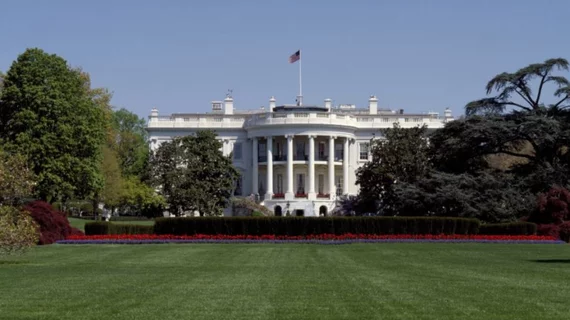Lessons from the past: Comparing Trump’s COVID-19 diagnosis to Eisenhower’s heart attack
When the news broke on Oct. 2 that President Donald Trump had tested positive for COVID-19, it captured the world’s attention in an instant. One observer, internist and cardiologist Thomas H. Lee, MD, was reminded of a similar moment back in 1955—the day President Dwight Eisenhower experienced an acute myocardial infarction (AMI).
Lee, the chief medical officer at Press Ganey and a professor at Harvard Medical School, wrote about that famous day for the New England Journal of Medicine, noting that it provides helpful context as COVID-19 continues to linger in the White House.
Eisenhower’s physician, Lee explained, was slow to recognize the signs of the president’s AMI—but the team around Eisenhower did quickly understand just how crucial this moment was for the nation. Eisenhower was a candidate for reelection at the time—an obvious similarity with Trump’s COVID-19 diagnosis—and 11 different press briefings were held to keep voters informed.
“The reaction to the news of Eisenhower’s heart attack was panic, and the thirst for more information was intense,” he wrote. “In some ways, myocardial infarction was even more frightening to Americans than COVID-19 is today. Heart disease had become the leading cause of death because of cigarette smoking and decreased ‘competition’ from infectious diseases and wars. Mortality among patients with myocardial infarction who reached the hospital was 30 to 40% because there just wasn’t much to offer patients beyond bed rest.”
Eisenhower’s staff chose to “play down the seriousness of the unfolding events” at first,” Lee added. But more information started to come out over time, especially once Jim Hagerty, a reporter the White House trusted, pushed for more transparency. Another key figure who helped improve communication was cardiologist Paul Dudley White, “who was arguably the most respected physician in the country.”
“White had been selected as an external consultant by the team of military doctors caring for Eisenhower,” Lee explained. “He and his wife had been on their way to a dinner party in Boston when they heard the news about Eisenhower’s heart attack on the radio. Within a few hours, the surgeon general tracked him down and asked him to fly to Denver in the morning.”
White would go on to give a “breathtaking” press conference, one that included detailed information about AMIs many Americans simply did not know at the time. This moment is now recognized as a true game-changer for Eisenhower—and for the nation’s understanding of heart attacks as a whole. It helped the public regain its trust in the information it was receiving from the White House, and it showed that such trust must earned—it can’t just “be created abruptly during a crisis.”
According to Lee, the healthcare team presently treating Trump could learn a lot from this famous moment in history when it comes to communicating with the public about serious health issues. Transparency, honesty and optimism can go a long way toward helping a concerned nation cope with uncertainty.
“Epitomizing expertise, empathy and judgment, White found a way to play the role of physician for not just the patient but also the country: He eased fears, provided accurate information and defined a credible path forward for both,” Lee concluded. “And if he were doing so in 2020, he would do it wearing a mask.”
Lee’s thorough assessment is available in full here.

